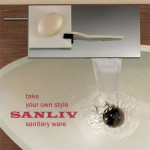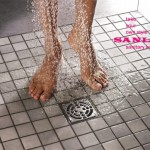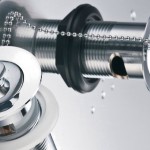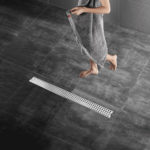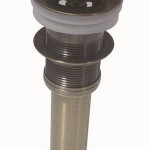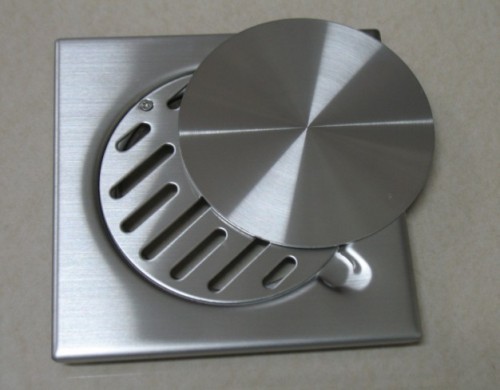How to Unclog stopped drains without Calling a Plumber? This article shows different methods of UNSTOPPING CLOGGED kitchen SINK DRAINS, unclog bathtub drains, bathroom sink drains, toilet drains, even whole house blockage. Clearing drain clogs are no fun and it’s a lot better to prevent them from occurring in the first place if possible.
Unclogging stopped drains
Tools of the trade
Make the job easier with the right tools: a good quality plunger, a pipe wrench, a 25 ft sewer snake (auger) , a closet auger. … Avoid caustic chemical drain cleaners.
Kitchenn sinks:
(Usual cause: グリース, food particles)
If the sink is a double-bowl model, plug one side with a cloth and hold it firmly in place. If a disposer is mounted in one side, plug the opposite side.
Run hot water into the sink, the hotter the better, even boiling. If the sink has a disposer, turn it on. If this doesn’t clear the obstruction, try using a plunger, making sure the plug on the drain on the other side of the double bowl doesn’t pop loose. It’s good practice to apply a thick layer of petroleum jelly to the rim of the plunger before using it to ensure a tight seal, thus greater suction.
If this doesn’t work, you may need to run a snake through the pipe under the sink. First check to see if the trap has a clean-out plug. If it does, remove it (be careful; water will drain out), and push a straightened coat hanger or bottle brush around the bends of the trap to remove debris.
If that fails, you will have to disassemble the trap; (be aware that all the water in the sink will pour out when you do this). The trap is held in place by a large nut on either end. They may come loose by hand, but you may need a pipe wrench; be careful not to damage them.
Once the trap is removed, check to see if it’s clear. If it is, feed the snake into the drainpipe going into the wall. You should eventually detect resistance, but this could be as far as ten to fifteen feet into the drainpipe. As you turn the snake, feed another foot or two into the pipe, and then remove it. You should see some debris on the tip of the snake.
Re-assemble the trap and try running hot water through the pipe again. If it’s still clogged, try using the plunger again. You may have to repeat the whole process once or twice more.
Bathtubs
(Usual cause: hair, soap scum, body oils)
Quite often, the problem here is simple. Hair tends to collect at the drain itself and can be easily removed to clear the obstruction. If there is a screen over the drain, remove it and insert a bent wire such as a coat hanger to fish out any hair or debris that may be stopping the drain. If there is a pop-up drain, raise it and try pulling the debris right out.
If this fails to clear the obstruction, try using the plunger. But you will need to plug the opening at the bottom of the overflow plate to keep the pressure from escaping there.
If the plunger doesn’t work, you will need to use the snake as before, but feed it through the overflow plate. Two screws usually hold this plate in place, and when you pull it out the drain-opening mechanism will come with it. Most bathtub obstructions are within three feet of the drain, but the snake may be harder to feed through the pipe because of the S-shaped trap under the floor.
As with the sink, the first try may not resolve the problem, or it may re-occur further down the pipe so you may have to repeat the process; once it is cleared, re-assemble the overflow and drain screen and run several gallons of hot water to clear any residual debris.
Bathroom sinks:
(Usual cause: hair)
Most clogs will be caused by hair collected in the drain. Unscrewing the drain plug and using a bent wire to clean any debris in the pipe above the trap can usually easily clear this obstruction.
If this fails to clear the blockage, try using the plunger. Be sure to plug any overflow vents with a cloth before plunging to keep pressure from leaking there. If that fails, you will need to use the snake. Follow the same procedure as described under Kitchenn sinks.
にわか雨:
(Usual cause same as bathtubs)
The simplest but sometimes the most stubborn clogs. Occasionally, hair will collect at the drain, but more often, it will be deep inside the pipes. Problems can often be prevented here by installing a supplemental screen in the drain to prevent any hair from passing through.
Once the pipe is clogged, しかしながら, first try plunging, but usually a snake will be needed, and it may well need to be extended to its full length to reach the obstruction. You will need to remove the drain cover, which is usually held in place by two screws.
トイレ:
(Usual cause: toilet paper)
Toilets usually clog in the trap built into the fixture, so the proper tool to use in these cases is a closet auger, which is only about three feet long.
A plunger will usually clear the obstruction fairly easily, but in the event that it doesn’t, place the auger in the toilet with the upturned tip going into the drain and push down as you crank to the right.
Once you feel the auger pass through the trap, crank to the left to pull it back out. Pour a bucket of water into the bowl to make sure it empties before flushing the toilet again. You may have to repeat the process, working the cable left to right until it’s free.
Whole House blockage:
(Usual cause: backed-up sewer or septic, broken sewage pipe.)
This involves a blockage in the main drain leading out of the house. Obstructions in the line leading to the street can be the most stubborn of all and could indicate more serious problems that professionals are best equipped to handle.
If you want to try freeing the clog yourself, you can rent a power auger and feed it through the cleanout just below where the main drain leaves the house.
You can try running a snake through the cleanout pug found at the farthest end of the drain just above the ground Lever, or you may need to rent a power auger
The cleanout plug is mounted on the largest drain pipe near where it exits the house. It may be in a basement or crawlspace, or in a utility closet in slab construction. It may be in a vertical or horizontal pipe.
The cap has a square fitting at the top, which will have to be removed by an open-ended wrench. Once again, be prepared to mop up the water which will escape when it is opened.
One option that may be tried is to use a powerful stream of water from your garden hose in the drain to force a clog free, but this could cause even more flooding.
If this fails, the next step is usually best left to a professional.
( If you have a septic tank, it may need cleaning out.)
Preventive measures:
Clearing drain clogs are no fun and it’s a lot better to prevent them from occurring in the first place if possible.
- First and foremost, try not to let hair, soap scum, oils, グリース, food particles, paper, プラスチック, or any foreign material enter your drain.
- Do not pour any grease down any drain. Pour leftover grease into cans and throw them in the garbage.
- When using a garbage disposal, run plenty of cold water to flush food particles that stick to the sides of the pipe.
- Don’t empty coffee grounds into the sink.
- Never dump chemicals like paint or paint thinner down the drain.
- Use strainers in all bathroom drains to intercept hair before it enters the drain.
- Clean sink stoppers regularly.
- Make it a practice to pour a pot of boiling water down each drain once a month, but do NOT do this in your toilet or bidet.
- Periodically empty one half cup of baking soda down each drain, followed by one half cup of white vinegar. Cover the drain and let it stand for a few minutes; then pour a pot of boiling water down the drain. The baking soda and vinegar mixture dissolves fatty acids which may be starting to collect.


